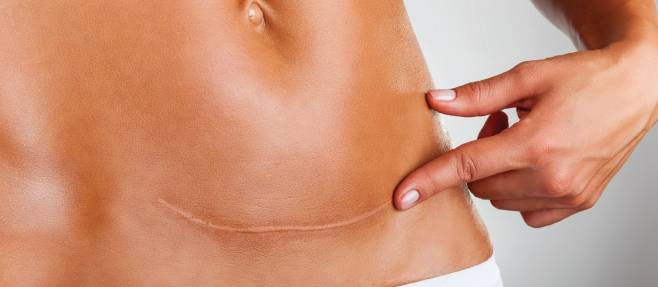The Importance of Proper Incision Care

Surgical procedures, including plastic surgery, require one or more incisions, the proper healing of which are critical to their recovery process. Proper incision care is essential not only to promote a healthy recovery but also to avoid complications like infections and scarring. Paying careful attention to incision care is vital for achieving and maintaining the best aesthetic and functional results, while neglecting it can lead to delayed recovery and, in severe cases, further medical intervention.
Immediate Post-Surgery Care
The first few days after surgery are pivotal for smooth healing. Patients must follow all post-procedure instructions provided by their surgeon meticulously. These instructions will typically include guidelines for medication, dressing changes, and incision care.
Keep the Incision Area Clean and Dry
Surgeons typically advise patients to keep their incision dry for at least 48 hours post-surgery. This means avoiding showers, baths, swimming, or any water-related activities. If moisture reaches the incision site too early, it can increase the risk of infection by providing a breeding ground for bacteria. After the initial 48-hour window, you may be able to shower, but you should avoid submerging the incision in water for about two weeks post-surgery.
Avoid Touching the Incision with Unwashed Hands
Touching your incision with dirty hands or scratching it when it feels itchy can introduce bacteria and lead to infection. While it can be tempting to rub the incision site or apply lotions, this can interfere with the healing process. Instead, wait until your surgeon gives the go-ahead to apply any products.
Cover the Dressing When Showering
Once your surgeon allows you to shower, take precautions to protect the incision from water exposure. Cover the bandage or dressing with plastic wrap or a waterproof dressing to keep it dry. You should also avoid direct water pressure on the incision site.
Cleaning the Incision Site
Proper cleaning of the incision site is fundamental to prevent infections and promote healing.
Use a Mild, Surgeon-Approved Soap
While keeping the incision clean is important, the type of cleanser you use is equally critical. A mild soap approved by your surgeon is usually recommended. Avoid harsh cleaning agents like rubbing alcohol, hydrogen peroxide, or antibacterial skin cleansers, as these can dry out the skin and slow the healing process.
Pat Dry, Don’t Rub
Once the incision site is clean, gently pat it dry with a clean towel. Rubbing the area can disrupt healing and damage delicate new skin, leading to increased scarring.
Frequency of Cleaning
The frequency with which you clean your incision site will depend on your surgeon’s instructions, but generally, it is advised to clean the area once or twice daily. Over-cleaning can irritate the incision, while under-cleaning can increase the risk of infection.
Changing Dressings
Dressings protect your incision from bacteria, dirt, and irritation. They should be changed regularly based on your surgeon’s instructions.
When and How to Change Dressings
Surgeons typically instruct patients on when and how to change their dressings. Always use sterile materials to avoid introducing bacteria to the wound. If your dressing becomes damp, shows excessive fluid, or appears dirty, it is time to change it. Always wash your hands thoroughly before handling the dressing or incision.
Use Sterile Materials
Non-sterile dressings or materials can introduce pathogens to the wound, delaying healing or causing infections. Make sure to follow your surgeon’s recommendation for the type of dressing to use and only apply sterile materials directly on the incision.
Managing Swelling and Discomfort
Swelling is a natural part of the body’s healing process, but there are ways to manage it to reduce discomfort and aid in faster healing.
Cold Compresses and Medications
If your surgeon recommends it, applying cold compresses around—not directly on—the incision site can help reduce swelling. Additionally, take any prescribed medications for pain relief and infection prevention. However, avoid anti-inflammatory medications like ibuprofen unless cleared by your surgeon, as these can interfere with blood clotting and wound healing.
Avoiding Infection
One of the most serious risks during the recovery period is infection, which can lead to complications and even reopen the wound.
Signs of Infection
Monitor your incision daily for signs of infection. These may include redness, swelling, warmth, or discharge (pus). Changes in the size or shape of the incision can also indicate trouble. Other warning signs include fever or chills, which may suggest a systemic infection.
If you notice any of these symptoms, contact your surgeon immediately.
Protecting the Incision from External Factors
How you protect your incision can impact both short-term healing and long-term scarring.
Avoid Exposure to Direct Sunlight
UV rays from the sun can darken scars and make them more noticeable. It is essential to keep your incision covered and protected from the sun, particularly in the first few months of healing. Once the incision has healed, you can apply a high-SPF sunscreen to minimize scar visibility.
Wear Loose Clothing
Tight or rough clothing can rub against your incision, causing irritation, delayed healing, or even opening the wound. Wear loose-fitting clothes that allow air to circulate and minimize friction.
Use a Fragrance-Free Moisturizer
Once your surgeon gives you the green light, you can use a fragrance-free moisturizer to soften scar tissue. Moisturizing helps keep the skin supple and can improve the overall appearance of the scar over time.
Monitoring Healing Progress
Tracking the progress of your incision’s healing is a vital part of recovery.
Observe the Appearance of the Incision
Keep an eye on how the incision changes over time, including its color, size, and any swelling. Scarring will often go through different phases, starting as red or purple before gradually fading to a lighter shade. Patience is key, as full healing and scar fading can take months to years.
Follow-Up Appointments
It is essential to attend all follow-up appointments with your surgeon. These visits allow your doctor to monitor the healing process, assess for any complications, and adjust your care plan as needed.
Tips For For Long-Term Care
Once the initial healing phase is over, long-term care of the incision site is still necessary to ensure the best possible outcome.
Do: Use Scar Creams
Your surgeon may recommend specialized scar creams or treatments. These products can help minimize the appearance of scars and promote smooth skin healing. Be consistent with their use for the best results.
Do Not: Engage in Strenuous Activities Too Soon
One of the biggest risks to incision healing is engaging in activities that strain the body, such as heavy lifting or intense exercise. Follow your surgeon’s recommendations on when it’s safe to resume normal activities and exercise. Pushing your body too hard too soon can tear stitches or disrupt internal healing.
Do: Maintain a Healthy Diet and Stay Hydrated
Your body needs proper nutrition to heal effectively. Eating a balanced diet rich in vitamins and staying hydrated will support your immune system and skin regeneration processes.
Proper incision care is essential for a smooth recovery and minimizing complications. By following your surgeon’s instructions and the guidelines provided here, you can promote healing, reduce scarring, and lower the risk of infection. Remember, every step you take in caring for your incision contributes to achieving the best possible outcome from your surgery.
